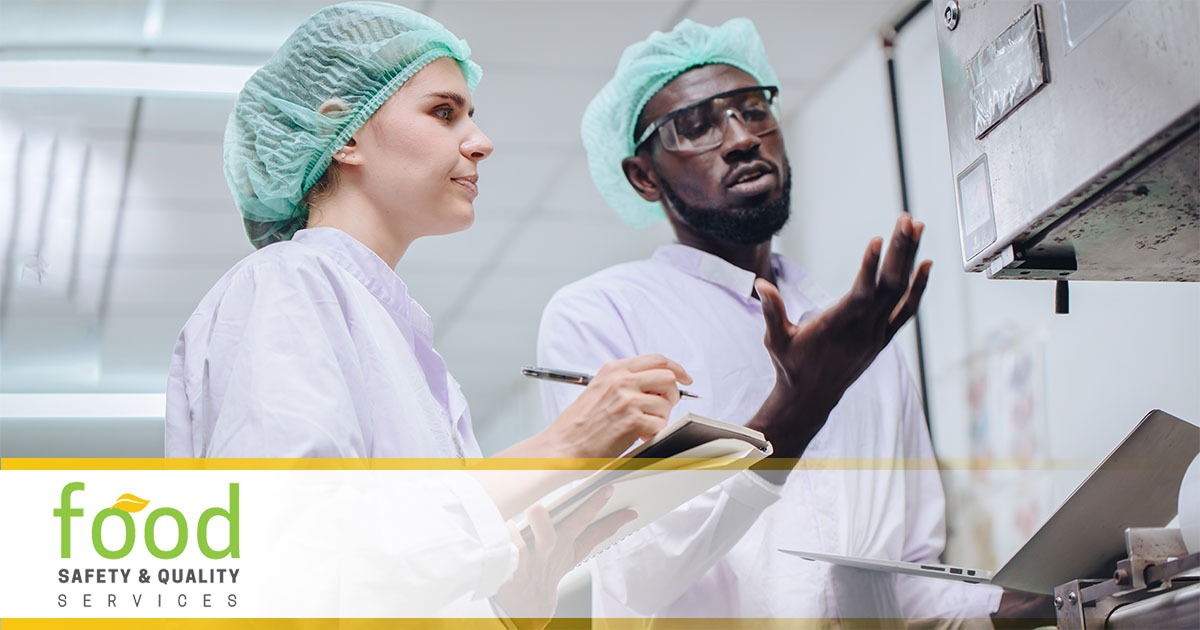How to Develop a Food Safety Culture Program
How to Develop a Food Safety Culture Program
Avoiding a Non-Conformity PenaltyWith the addition of food safety culture requirements for third party food safety audits such as BRC (British Retail Consortium) and SQF (Safe Quality Food), as well FDA joining the party to include culture as part of its “New Era of Smarter Food Safety”, the food industry is getting crash course on how to develop a food safety culture program that complies with these new standards.
Certification bodies were initially flexible with these programs, with a “if they have something, then give them credit” approach during audits. As each year goes by, certification bodies and auditors have gradually expected to see more details in these programs. But what are those details and expectations?

What are the expectations?
GFSI benchmarking requirements mention a senior management commitment to establish and continuously improve the food safety management system, which shall include elements for a food safety culture. Communication, training, feedback from employees and food safety related performance measurements are mentioned as required elements. In a GFSI position paper, “A Culture of Food Safety”, it recognizes 5 areas that can strengthen a company’s food safety culture. Those are:
- Vision and Mission
- People
- Consistency
- Adaptability
- Hazard and Risk Awareness
These five dimensions are great starting points and areas where opportunities to answer the questions around how to develop a food safety culture program. FDA also understands the relationship that culture has to food safety. In its “New Era of Smarter Food Safety” one of FDA’s goals is to help promote a culture of food safety throughout the food industry. Expectations are that FDA Consumer Safety Officer Investigators will receive formal training in food safety culture and will use this knowledge both to promote the importance of a positive culture within an organization as well to further evaluate an organization’s food safety risk based on the maturity of its food safety culture.
As culture becomes more mainstream for food companies, auditors expect to see a mature system that has built a solid foundation for continuous improvement. This oftentimes presents itself in the form of a multi-year program that has key performance indicators (KPI’s) and measurable results that show activity and continuous improvement. Having a one-dimensional program may have worked early on for your audits, but that success is likely to be short-lived in the future.
What you need to do
Approach this program not from a simple compliance standpoint, but from a “how can our company benefit from this program.” Companies often have opportunities for improvement with food safety programs as well as those programs that support food safety, pre-requisites.
How to develop a food safety culture program - Common areas of focus are:
Vision and Mission/Senior Management Commitment
Is culture part of your vision and mission statement and does senior management “talk-the-talk” when it comes to food safety?
Food Safety Education
Do key employees in each department have the knowledge necessary to prevent food safety incidents.
Food Safety Communication
Is the knowledge mentioned above communicated to others? Are food safety incidents or near misses communicated to the food safety team and properly investigated?
Food Safety Objectives
Does your company have food safety objectives that are measurable and attainable?
Consistency
Are food safety messages consistent and do employees consistently follow procedures within the food safety plan and pre-requisite programs.
Adaptability
Can the company adapt to emerging food safety trends and proactively prevent food safety incidents.
These are only some examples of where companies can find opportunities for improvement. There are plenty of other areas where food safety can have a stronger presence.
Once you determine where your company needs to improve, you can then work on that multi-year program. Auditors typically prefer programs that are fluid and can adapt to what the data suggests. Having a stagnant program is sure to give you a future nonconformance. A multi-year program may look similar to the following:
Year 1
Assessment year. Evaluate the current culture by the use of surveys or employee interviews. Determine if written programs are missing and if the food safety plan is still adequate. Assess the food safety knowledge of key employees and departments and develop a training plan if needed. Develop appropriate KPI’s.
Year 2
Evaluate results from Year 1 activities. Implement corrections and continuous improvements. Determine if the program is moving as expected.
Year 3
Evaluate the maturity of the program. Determine if KPI’s and culture are trending in the right direction. Adjust direction if needed.
This multi-year approach is a good way to show your progression throughout the years. If senior management is willing to dedicate the resources to improving overall food safety culture, the program should have a positive effect in preventing/reducing food safety issues, and that is the overall goal!
As the expectations from auditors continue to increase and mature, non-conformances are increasing due to the following common reasons:
Additional assistance?
How to Develop a Food Safety Culture ProgramAnswering the question, “How to Develop a Food Safety Culture Program” can be daunting. Food safety culture is still new to most of the food industry. Having outside assistance to help you brainstorm the different elements to your program and to help your company stay on track during development and implementation is common.
Having employees attend food safety culture training classes or having a trainer come to your company to deliver an in-house training are great ways to educate your team members and provide a content boost that will help get the program moving at a good pace.
Food Safety and Quality Services has created a new training program called developing a positive food safety culture that will assist attendees with designing an effective food safety culture program that meets individual organizational needs while also meeting the current GFSI requirements. Schedule your class today to learn how to gather baseline data to understand the current maturity level of your company’s culture as well as how employee education, empowerment and retention can positively influence food safety.
Prerequisite programs that will help with a food safety culture implementation include HACCP, Preventive Controls for Human Food, ServSafe Food Protection Manager and Food Defense (IAVA).
Register for one of our upcoming classes or contact us today to schedule your in-house training.
About the author

Lance Roberie
Food Safety Consultant and TrainerLance Roberie has over 20 years of quality assurance and food safety experience within the food industry. Mr. Roberie holds the following certifications:
- Certified Food Safety HACCP Manager
- Preventative Controls for Human Foods (PCQI) Lead Instructor
- Meat & Poultry and Seafood HACCP Lead Instructor
- FSPCA Food Defense (IAVA) Lead Instructor
- ASQ Certified Manager of Quality & Organizational Excellence
- ServSafe Instructor and Exam Proctor
- Internal Auditor and GFSI Specialist
Lance and the Food Safety & Quality Services’ training curriculum will advance your team's food safety knowledge through certified training, consulting, and “real life” industry scenarios.
upcoming Classes
September 17, 2025 09:00 AM - 03:00 PM
October 14, 2025 08:00 AM - October 16, 2025 05:00 PM
August 26, 2025 08:00 AM - August 28, 2025 05:00 PM
Need a Food Safety Specialist?
Free 15 Minute Consultation.Learn how we helped Abita Brewing Company pass their first food safety audit with an A grade.

